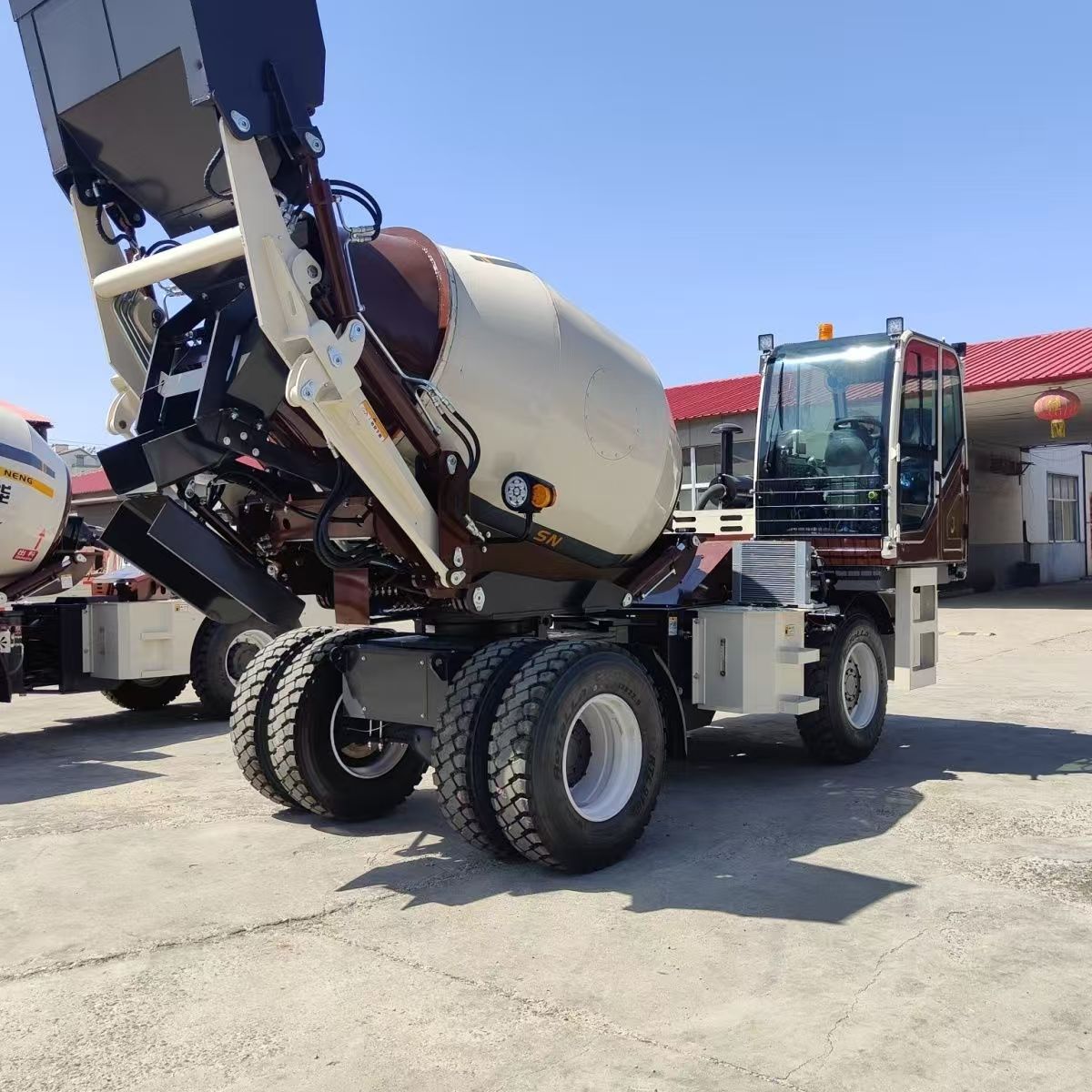Concrete mixers are indispensable equipment in construction. They can be classified in various ways, and the following is a detailed classification from different perspectives:

Classified by Working Principle
- Gravity-type concrete mixer: The inner wall of the mixing drum of this type of mixer is equipped with blades. When working, the mixing drum rotates around its horizontal axis, and the materials are lifted by the blades and fall freely under the action of gravity. Mixing is achieved through the mutual collision and turning of materials. It is suitable for mixing plastic concrete, such as concrete with a large slump. It has a relatively simple structure and is easy to operate, but its mixing efficiency is low and energy consumption is high.
- Forced concrete mixer: The mixing drum is fixed, with rotating mixing blades inside. The blades forcefully extrude, turn over and shear the materials to make them evenly mixed. It is suitable for mixing dry-hard concrete, lightweight aggregate concrete, etc. It has good mixing quality and high efficiency, but its structure is complex, wear is more serious, and the cost is relatively high.
Classified by Mixing Method
- Single horizontal shaft mixer: The mixing shaft is horizontally placed in the mixing drum, and mixing blades are installed on the shaft. The rotation of the shaft drives the blades to mix materials. It has a good mixing effect and a compact structure, and is suitable for small and medium-sized construction projects.
- Double horizontal shaft mixer: There are two horizontally placed mixing shafts, and the blades on the two shafts are staggered and rotate in opposite directions to strongly shear and mix materials. This kind of mixer has high mixing efficiency, uniform mixing and large production capacity, and is widely used in large-scale construction projects, prefabricated component factories, etc.
- Vertical shaft mixer: The mixing shaft is vertically installed in the center of the mixing drum, and the blades on the shaft rotate with the shaft to mix materials. According to different blade forms, it can be divided into vortex propeller type, planetary type, etc., which are suitable for mixing concrete with different characteristics.
Classified by Mobility
- Fixed concrete mixer: Installed on a fixed foundation and cannot be moved. It is usually used in large concrete mixing stations, and is used in conjunction with batching machines, conveyor belts and other equipment. It has high production efficiency and is suitable for mass concrete production.
- Mobile concrete mixer: Equipped with tires or crawlers at the bottom, it can be flexibly moved according to construction needs. It is suitable for small and medium-sized construction sites, especially when the site is scattered and the operation location needs to be changed frequently. There are two common types: tire-type and crawler-type. The tire-type is easy to move, and the crawler-type has strong ability to adapt to complex terrain.
Classified by Capacity
- Small concrete mixer: The discharge capacity is generally below 500L. It is mainly used for small-batch concrete mixing in small construction projects, rural house building, municipal maintenance, etc. It has a simple structure, flexible operation and is easy to carry.
- Medium-sized concrete mixer: The discharge capacity is between 500 - 2000L. It is suitable for medium-sized construction projects, prefabricated component production, etc. It can meet the demand for a certain batch of concrete and has stable performance.
- Large concrete mixer: The discharge capacity is more than 2000L. It is often used for large-scale concrete production in large water conservancy projects, bridge construction, large mixing stations, etc. It has the characteristics of high production efficiency and high degree of automation, and is usually used in combination with automatic control systems.
Classified by Special Purpose
- Asphalt concrete mixer: Specially used for mixing asphalt concrete, it has heating and heat preservation devices, which can ensure the temperature of asphalt during mixing, meet the construction requirements of asphalt concrete, and is widely used in road construction.
- Lightweight concrete mixer: Designed for lightweight aggregates (such as ceramsite, expanded perlite, etc.), it can reduce the damage of aggregates during mixing, ensure the performance of lightweight concrete, and is suitable for the construction of lightweight wall materials, insulation layers, etc.





